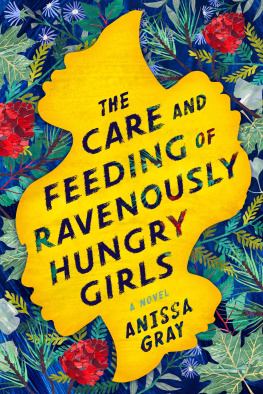Contents
Guide
Pagebreaks of the print version
Also by Kathleen Hale
Kathleen Hale Is a Crazy Stalker
No One Else Can Have You
Nothing Bad Is Going to Happen
SLENDERMAN
Online Obsession, Mental Illness, and the Violent Crime Of Two Midwestern Girls
KATHLEEN HALE

Grove Press
New York
Copyright 2022 by Kathleen Hale
Jacket design Becca Fox Design
Jacket photograph franckreporter/iStock
All rights reserved. No part of this book may be reproduced in any form or by any electronic or mechanical means, including information storage and retrieval systems, without permission in writing from the publisher, except by a reviewer, who may quote brief passages in a review. Scanning, uploading, and electronic distribution of this book or the facilitation of such without the permission of the publisher is prohibited. Please purchase only authorized electronic editions, and do not participate in or encourage electronic piracy of copyrighted materials. Your support of the authors rights is appreciated. Any member of educational institutions wishing to photocopy part or all of the work for classroom use, or anthology, should send inquiries to Grove Atlantic, 154 West 14th Street, New York, NY 10011 or .
FIRST EDITION
Published simultaneously in Canada
First Grove Atlantic hardcover edition: August 2022
This book was set in 12 point Arno Pro by Alpha Design & Composition of Pittsfield, NH.
This book was designed by Norman Tuttle at Alpha Design & Composition.
Library of Congress Cataloging-in-Publication data is available for this title.
ISBN 978-0-8021-5980-9
eISBN 978-0-8021-5981-6
Grove Press
an imprint of Grove Atlantic
154 West 14th Street
New York, NY 10011
Distributed by Publishers Group West
groveatlantic.com
For Simon
Contents
Authors Note
This book is the result of seven years of research. My sources include police reports, doctors reports, police interrogations, court transcripts, previous coverage of the case, and other public records, as well as my interviews with psychologists, private investigators, juvenile justice experts, historians, professors, parents of children with mental illnesses, Morgan Geyser, her friends and family, her defense team, and her pen pals.
I also relied on police interviews with the victim, Payton Isabella Leutner, who is referred to in this book as Bella, which was her nickname when the crime occurred.
While I was unable to interview Bella or Anissa Weier, I depicted them according to public records, including social media postings, court documents, and television interviews with Bella and her family, as well as public statements made by Bellas and Anissas friends, family, and teachers.
I grew up about thirty minutes from Waukesha (pronounced WOK-uh-shaw), where this crime took place. Throughout the book, there are times when I describe Wisconsins culture, traditions, seasonal patterns, politics, and establishments, drawing from my own experiences. Skateland, for instance, where Morgan and Anissa spent their last night of freedom, was a popular birthday venue during my childhood, too, and has not changed much since, though it now has stuffed emojis instead of whoopee cushions at the prize counter. When it comes to describing cultural norms, I supplement my experience and opinions with those of sociologists and historians.
In 2018, I moved back to Wisconsin for three months to conduct research and interview people in Waukesha, a county well known for being one of the three most conservative voting blocks in Wisconsina place where many residents equate media and press with classist snobbery and fake news.
In general, Wisconsinites are wary of outsiders. Like most people, they are especially wary of journalists. Growing up there earned me some credibility, in the sense that certain people involved in the Slenderman stabbing case became willing to speak to me after learning I was from the area. But many others, including the Leutners, the Weiers, Anissas defense team, Judge Michael Bohren, Morgans and Anissas teachers, the administrators of Washington County Jail and Winnebago Mental Health Institute, and the entire Waukesha police force, declined to answer my questions. In places where these people and establishments enter the narrative, my descriptions of them are drawn from records listed above and from my personal observations of them during hearings I attended. My descriptions of Bohren as a young boy are taken from his yearbooks and college newspapers. When I describe the history of Winnebago Institute, I source from the hospital museum. Anything having to do with the Geysers personal experiences and their family history are taken directly from my interviews with them.
Morgan and I have spoken on the phone countless times, but during the several months that I lived in Milwaukee, I regularly met with her in person at Winnebago. During visiting hours, we spent the majority of time discussing her writing, and whatever new story or novel she was working on. But Morgan also talked to me about her childhood, her family, her illness, boys, art, and her positive memories of Bella. Any descriptions of the crime that are attributed to Morgan in this book have been taken from police reports and court records. She and I did not talk about the crime, though she knew I was writing a book about it. Descriptions of her experience with schizophrenia, from childhood onward, are based primarily on my eighteen hours of in-person conversations with her, though I also sourced from my twelve hours of interviews with her mother, as well as from court records that include testimony from psychologists and psychiatrists who evaluated Morgan.
I first wrote about this case for Vice in 2014 and then for Hazlitt in 2017. Slenderman draws on my previous reporting, combined with my subsequent research on the case and its ancillary subjects, but in places where my prior reporting and interviews are mentioned, I use the third person, to avoid injecting myself in the book. Actual names have been used, with a handful of exceptions; pseudonyms are marked with asterisks and are reserved for people who agreed to speak with me under the condition of anonymity or for minors whose identities I want to protect. In dialogue, I use em dashes for clarity and to mark very short elisions and ellipses to mark any longer breaks.
Wisconsin makes obtaining legal documents extremely difficult, a practice considered hostile to the free press. At the Waukesha County Courthouse, transcripts and related documents cost up to five dollars per page, and the onus is on the journalist to find them: strangely, court transcripts are not always kept in the courthouse records office, as one might expect, but rather in court reporters private homes. In my research I often needed to chase down a retired court reporter in the hopes that she could find the notes I requested somewhere in her basement. I was also surprised to discover that, as the first person to request the vast majority of these records, I bore the burden of paying additional money for the reporter to actually begin the transcription process; the court reporter had retained her steno machine notes, of course, but, in the absence of any prior payment being made for those materials, had forestalled transcribing the hearings assigned to her. Though it surprised me to learn that I was the first to request these transcriptions, it made sense once I discovered their price tag.












